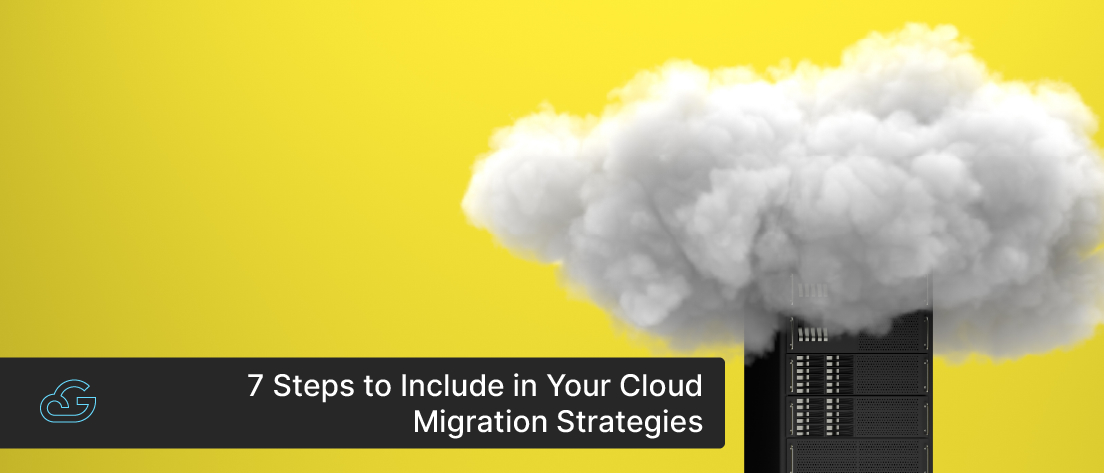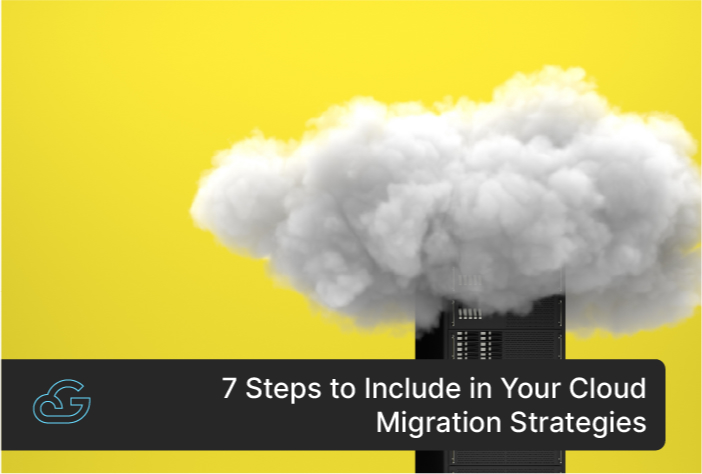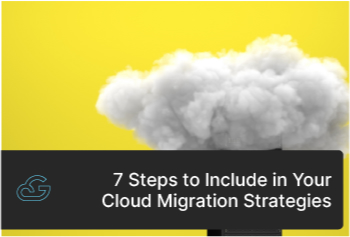Blogs / Cloud Migration
7 Steps To Include In Your Cloud Migration Strategies
By
Vineeth Babu
Posted: December 03, 2021
• 4 Min Read
Enterprises are increasingly moving their operations to the cloud as the benefits offered by the cloud have outpaced traditional delivery models. Unlimited access to virtually limitless computer resources, cost reduction, and better security are just some of the key reasons to switch. Like any other investment, having a water-tight plan is critical before moving your data, workloads, or applications from your on-premises or legacy infrastructure to the cloud. Partnering with a reliable cloud migration services provider is at the core of any successful cloud migration journey.
Before starting with your migration journey, you must work with your cloud migration service provider on three important aspects.
Why Are You Moving To The Cloud?
Be clear on the purpose of migration and set business goals that need to be achieved by moving to the cloud. Setting up baseline standards for your planned IT infrastructure and key performance indicators (KPIs) will make it possible to measure the extent of your cloud migration success.
What Are You Moving To The Cloud?
Analyze the interdependencies in your current environment and prioritize on what will be migrated. Examine the feasibility of migrating complex workloads and the tools needed to simplify workload deployment. Finally, align your plan with the Return on Investment (ROI) achieved through migration and timelines.
How Are You Moving To The Cloud?
Implement best practices in consultation with your cloud service provider to design, validate and migrate your applications and workloads to the cloud. Plan on modernizing your traditional legacy systems or applications based on your maturity models as recommended by your cloud consulting partner.
For maximum benefit, it is essential to go through the below steps while you plan your migration.
Step-By-Step Guide to Create a Cloud Migration Strategy
Each business possesses its unique vision, goals, and interests, necessitating a tailored cloud strategy that aligns with its specific needs. To navigate this transformative process successfully, a well-defined, step-by-step methodology must be followed to ensure a smooth and seamless transition to the cloud.
Our comprehensive cloud migration process is designed to deliver efficiency and effectiveness, empowering businesses to confidently achieve their migration goals. Let's explore the key steps involved.
- Identify And Prioritize Key Components For Migration
- Create A Well-Defined Migration Architecture
- Choose The Migration Strategy
- Establish Key Metrics
- Single Cloud/Hybrid Cloud Or Multi-Cloud
- Optimization And Cost Control
- Security And Compliance
Begin your migration plan with a clear picture of the core infrastructure components of your legacy system. Identify the interdependencies between technology components, applications, and services. Deploy Service Mapping to discover all application services in your organization and create a comprehensive dependency diagram to map all devices, applications, and configurations in your current system. An ideal migration plan always starts with migrating the services that have the fewest dependencies followed by the services which are closest to your customers.
Establishing a meticulous architectural plan is crucial to driving your migration effort. The architecture should define the refactoring effort, infrastructure requirements, and migration strategy. It should also cover production switchover mechanisms and prioritize the components to be migrated.
IT assets to be migrated will have unique needs based on performance, cost, and complexity and hence there is no one-size-fits-all plan. Therefore, you must analyze the current and future state of your system to choose a cloud migration strategy in line with your specific needs and capabilities. These cloud migration strategies also known as the 6 R’s of migration would help you choose the best cloud migration strategy.
Define key metrics or performance indicators to identify potential problems throughout the migration process. Establish metrics against different categories such as infrastructure, applications, user experience, and business engagement. Performance metrics such as disk performance, memory usage, error rates, availability, lags, response time, and engagement rates help you pinpoint and mitigate any performance issues. Determine the key business metrics most affected by cloud migration. A well-defined metrics help you clearly measure the success of your cloud migration efforts.
Choosing the right cloud environment to migrate your solutions involves multiple factors. You can opt for a single cloud provider if you want to optimize your application for a single cloud environment. On the other hand, adopting a hybrid/multi-cloud approach allows you to run certain components of your application on one provider while utilizing another provider for the remaining components. has context menu Each approach has its own pros and cons, but it’s best to choose the most suitable cloud environment based on your unique business needs.
Obviously, expenses on cloud infrastructure are vastly different from your on-premises infrastructure. However, you can achieve maximum ROI on your cloud investment through careful cost predictability, efficient balancing of spend, and resource management. Expert consultation with your service provider can help you choose the right strategy towards these goals. Optimizing and controlling the cloud cost will not be a barrier in your migration journey if your provider can bring in a comprehensive set of cloud cost management capabilities. This will help you to implement FinOps processes seamlessly across cloud environments.
Security is a major challenge when migrating to the cloud. Hence, it is essential that your infrastructure remains compliant with most of the security standards. Shift your migration plan to a trusted cloud provider who offers robust tooling and resources to help you to detect and overcome security vulnerabilities and sophisticated threats. No matter which cloud platform you migrate to, make sure that your migration service provider adheres to cloud-native security services controls and existing compliance regulations used across the globe such as PCI-DSS, HIPAA/HITECH, FedRAMP, and GDPR to name a few.
Choosing The Right Migration Service Partner
The success of your migration journey depends on the expertise of your chosen cloud provider. The right partner can help you to meet your organization’s short and long-term goals. Some of the key questions you should be asking yourself are - Is your provider partnered with any major cloud provider? Do they use industry-standard tools? Are they transparent in their business processes? Do they work with multiple vendors? Are they well-versed in managing security and compliance? Gsoft ticks all the right boxes here and can serve as your trusted cloud service provider. Contact our cloud consulting experts to get all your queries answered.


Get Know More About Our Services and Products
Reach to us if you have any queries on any of our products or Services.











